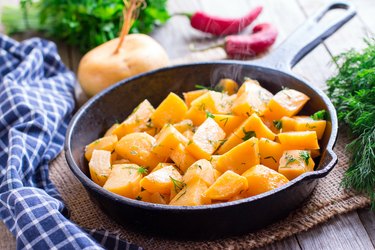
While not one of the most attractive vegetables, the turnip is certainly one of the most nutritious. And, this root vegetable is super versatile: It can be prepared in several different tasty ways, including boiled, roasted, mashed or sautéed.
"Turnips are a great addition to fall and winter cooking," Krista King, RD and certified health coach, tells LIVESTRONG.com, noting that turnips are also a lower-carb alternative to potatoes.
Video of the Day
Video of the Day
One cup of white potatoes has 31 grams of carbohydrates while a cup of boiled turnips has 7.89 grams. Plus, turnips are rich in fiber and minerals like potassium, phosphorus and magnesium, as well as vitamin C, says King. "You could serve turnips with a protein and a non-starchy vegetable like a salad, broccoli or Brussels sprouts," King says.
Read more: 12 Fall and Winter Superfoods
When buying turnips, look for roots that are firm and feel heavy for their size, advises the Montana State University Extension. Opt for small turnips (which are more likely to be young) over large old ones, which may have a bitter taste and a woody, unpleasant texture, the university says. Store turnips in your refrigerator's crisper drawer.
How to Boil Turnips
What You'll Need
- Turnips
- Knife
- Pot
- Water
- 1 potato (optional)
- Colander
- Salt
- Pepper
Step 1
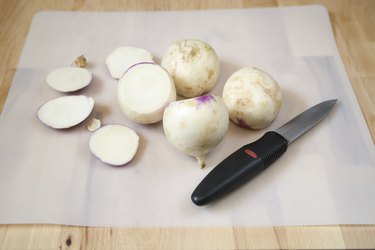
Cut off the tails and stems with a sharp knife, leaving only about 1 inch of stem connected to the bulb. You can leave the greens on or remove them, depending on your preferences. For the most nutritional benefits, leave them on.
Tip
For large turnips, quarter them so that they cook faster, recommends Palak Patel, a chef at the Institute of Culinary Education. Smaller ones can be boiled as-is, once the tails and stems are removed, she says.
Step 2
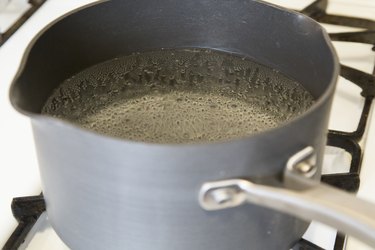
Choose a pot large enough for the number of turnips you'll boil, fill it with tap water and then place it on your stovetop burner. Bring the water to a boil using the highest heat setting available. When you see bubbles rise to the surface, the water is boiling.
Tip
For more flavor, add a bay leaf, parsley, rosemary, thyme or other herbs to the water, recommends Patel.
Step 3
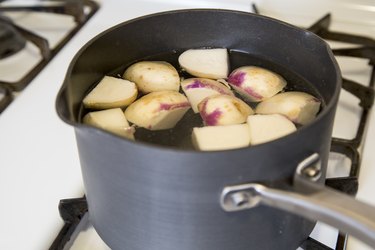
Add the turnips to the water and make sure the water completely covers them.
Step 4

Add one whole potato to the water if your turnips are especially large. Bigger turnips tend to have a bitter taste, notes Patel, and including a starchy vegetable — like a potato — will help absorb that bitter flavor.
Step 5
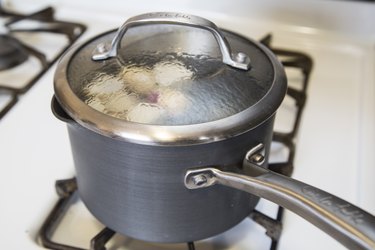
Simmer the turnips for 25 to 30 minutes, covered, keeping a close eye on the pot to avoid over-boiling or water overflow. The turnips should be done when they are fork-tender.
Step 6

Drain the turnips using a colander and add salt and pepper to taste. If you included a potato to absorb bitterness, you can either eat it or discard it.
How to Prepare Turnips
There are many ways to prepare this root vegetable beyond boiling it. You can incorporate it into mashed potatoes for a lightened-up version, suggests Patel. Here are some additional ways to make the most out of your turnips:
- A French fry substitutes: Cut turnips into sticks and then toss them with oil and any seasoning you'd like to add, says Patel. Bake at 425 degrees Fahrenheit for 20 minutes or until the "fries" are golden brown. Flip the turnip fries midway through.
- A salad: Thinly shave turnips using a mandolin. The paper-thin slices will look like a carpaccio, says Patel. Serve turnip slices with a citrus vinaigrette.
- Roasted: Slice or chop turnips and then place them on a baking sheet with a dash of oil and salt, pepper and seasonings of your choice, says King. Bake at 425 degrees Fahrenheit until crispy (about 20 minutes).
- Sautéed in a skillet: Clean, trim and quarter the turnips. Then sauté turnips in oil in a skillet and sprinkle fresh herbs over them.
- In a soup or stew: Turnips are an extremely versatile root vegetable and can be prepared in most of the same ways you prepare potatoes. For instance, says King, you can include them in a stew or soup where you would ordinarily use a potato.
Read more: 9 Ways to Make Root Vegetables Anything But Boring